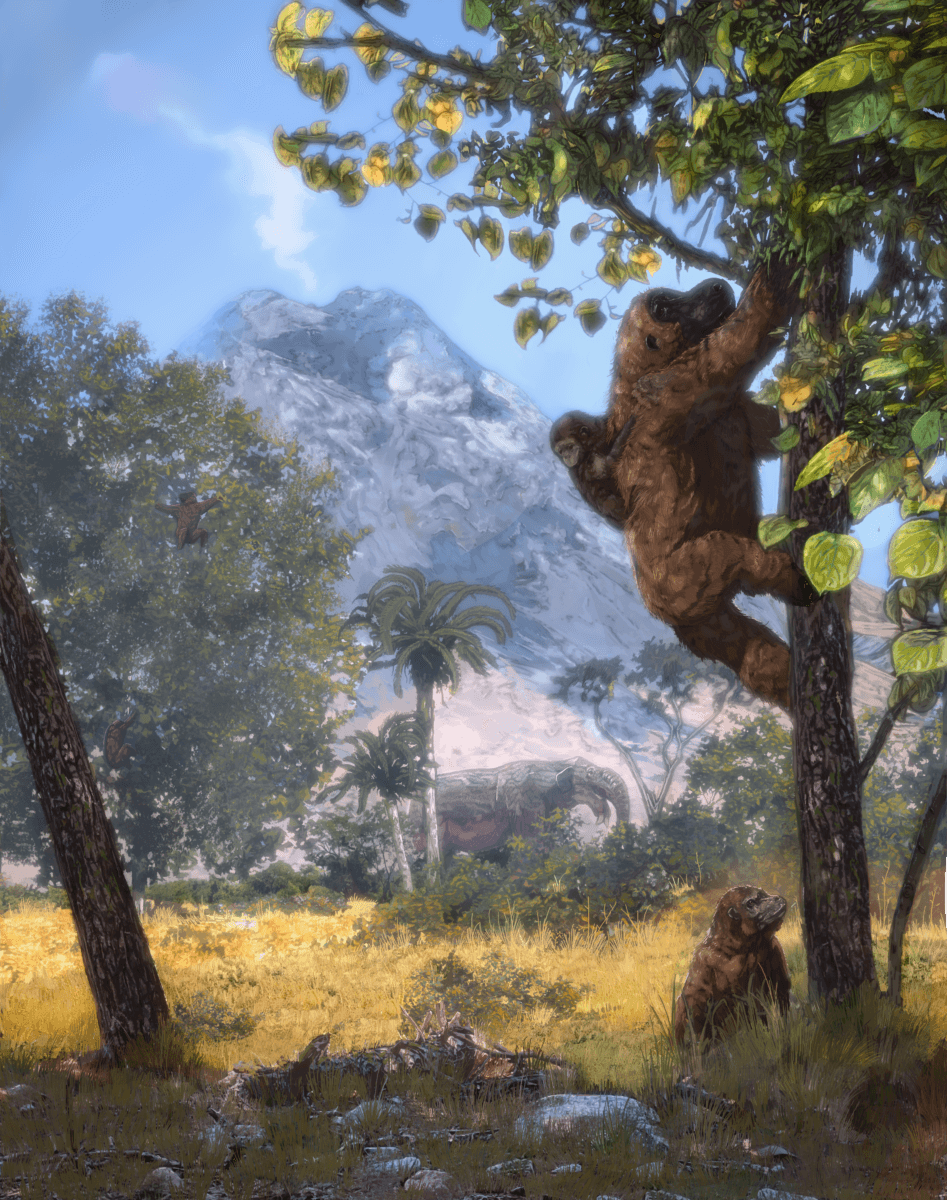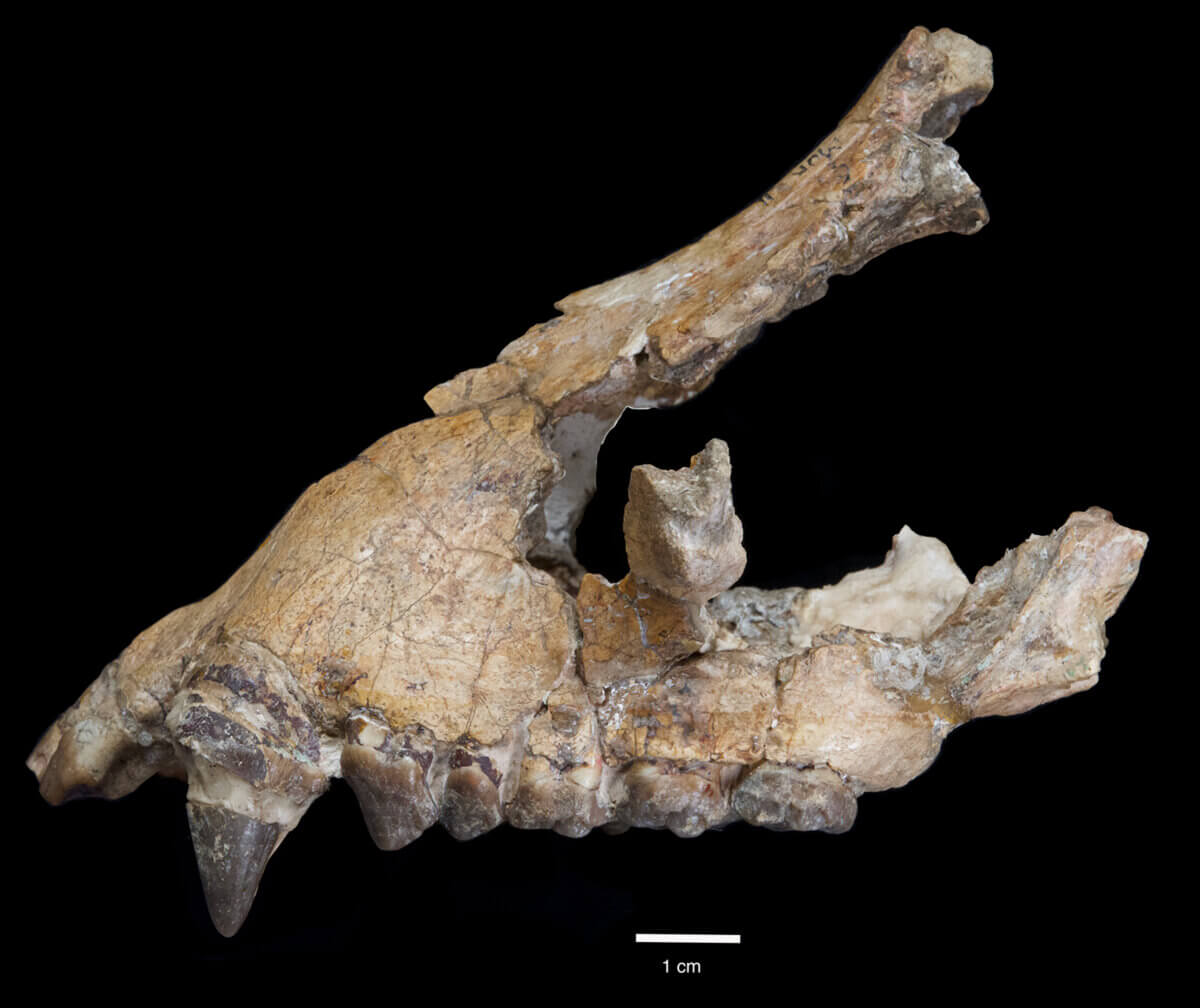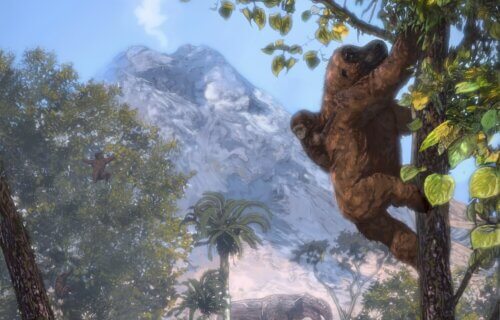ANN ARBOR, Mich. — Our upright posture dates back to an ape that lived in Africa 21 million years ago, a new study reveals. A straight torso enabled Morotopithecus to develop a nutritious diet that included leaves from tall trees. Researchers from the University of Michigan say the ancient primate’s remains provide new insights into human evolution.
Anthropologists have long thought early human ancestors began walking on two legs in order to pick fruit in forests. However, the discovery of Morotopithecus suggests they were driven by a life in open woodlands.
“The expectation was: We have this ape with an upright back. It must be living in forests and it must be eating fruit. But as more and more bits of information became available, the first surprising thing we found was that the ape was eating leaves. The second surprise was that it was living in woodlands,” says lead author Laura MacLatchy, a paleoanthropologist and professor in the U-M Department of Anthropology, in a media release.
Understanding how humans came to walk on two feet can help answer many of the fundamental questions about our species. It was a key milestone in human evolution, opening up opportunities to touch, explore, and learn how to carry and use tools.
For decades, scientists have believed our upright posture evolved in a common ancestor shared with the great apes including chimpanzees, gorillas, and orangutans around 15 million years ago. It led to the broad torsos and mobile forelimbs that appear on all great apes, known as the orthograde body plan.
The study in the journal Science also pushes back the origin of grassy woodlands by more than 10 million years, to the Early Miocene era. Fruit grows on the spindly peripheries of trees. To reach it, apes need to distribute their weight on branches stemming from the trunk, then reach out with their hands toward their prize. This is much easier if an ape is upright because it can more easily grab onto different branches with its hands and feet.
If its back is horizontal, then its hands and feet are generally underneath the body, making it much harder to move outward to the smaller branches of a tree — especially if the ape has a large body. This is how modern-day apes reach fruit and scientists have theorized it’s why apes evolved to be upright.

In this study, the Michigan team analyzed fossils of Morotopithecus — the world’s oldest and clearly documented ape. The species was more advanced than its later cousins such as Afropithecus and Kenyapithecus.
The landscape would have included a seasonal trees and shrubs punctuated by a broken canopy and open, grassy areas. Plants were “water stressed,” meaning they lived through periods of rain and drought. For at least part of the year, apes had to rely on something other than fruit to survive.
“These open environments have been invoked to explain human origins, and it was thought that you started to get these more open, seasonal environments between 10 and 7 million years ago,” MacLatchy says. “Such an environmental shift is thought to have been selected for terrestrial bipedalism—our ancestors started striding around on the ground because the trees were further apart.”
“Now that we’ve shown that such environments were present at least 10 million years before bipedalism evolved, we need to really rethink human origins, too.”
The first clue that these ancient apes were eating leaves was in their teeth. Molars were very “cresty” — craggy, with peaks and valleys. It suggested they were tearing fibrous leaves apart. Molars for eating fruit are typically more rounded, the study authors explain. Chemicals in dental enamel of Morotopithecus and other mammals found in the same rock layer revealed they were eating water stressed plants, common in the open or grassy woodlands of today.
“Putting together the locomotion, the diet and the environment, we basically discovered a new model for ape origins,” the researcher continues. “In anthropology, we care a lot about ape evolution because humans are closely related to apes and features like lower back stability represent an arboreal adaptation that may have ultimately given rise to bipedal humans.”

Previously, researchers believed equatorial Africa during the Early Miocene was thickly carpeted with forest, and that open seasonal woodlands and grasslands evolved only between seven million and 10 million years ago. A second study in the same journal reconstructed vegetation from nine fossil ape sites across Africa, including Moroto, during the Early Miocene. It revealed warm season, or C4, grasses were “everywhere” during that period.
“This paper looks at all these sites, pulls all this data together, and says, ‘Look, no matter how you evaluate the data, there’s no way you can escape the fact that all these proxies are converging on the same place—namely, that these environments are open, and they’re open with C4 grasses,” says Professor John Kingston.
“For the first time, we’re showing that these grasses are widespread, and it’s this general context of open seasonal woodland ecosystems that were integral in shaping the evolution of different mammalian lineages, including and especially in our case, how different ape lineages evolved.”
During this time, the East African Rift was forming. Earth was still breaking apart into different continents. As a result, this entire region uplifted, causing huge variation in topography, and therefore, the formation of regional climates and vegetation.
“There’s mountains and volcanoes, there’s cliffs and escarpments and valleys,” Kingston continues. “The landscape is just physically highly variable, and that, no doubt, is related to the vegetation heterogeneity.”
“The findings have transformed what we thought we knew about early apes, and the origin for where, when and why they navigate through the trees and on the ground in multiple different ways,” concludes Robin Bernstein, program director for biological anthropology at the National Science Foundation.
“For the first time, by combining diverse lines of evidence, this collaborative research team tied specific aspects of early ape anatomy to nuanced environmental changes in their habitat in eastern Africa, now revealed as more open and less forested than previously thought. The effort outlines a new framework for future studies regarding ape evolutionary origins.”
South West News Service writer Mark Waghorn contributed to this report.


21 million years old??? This is total theory. Carbon Dating is STILL a theory. The oldest recorded history is 6,000 years. That is not to say that the universe is not older, it simply PROVES that there is no record earlier than 6,000 years ago. Cease hyping theory.